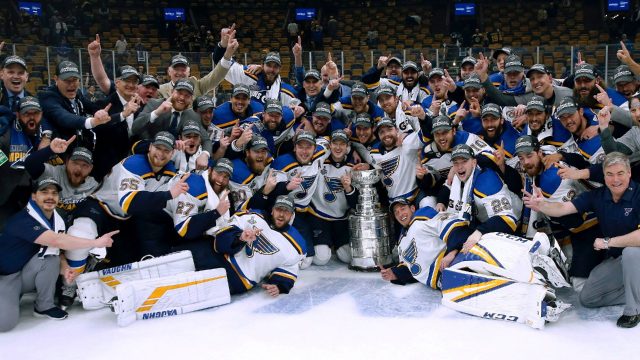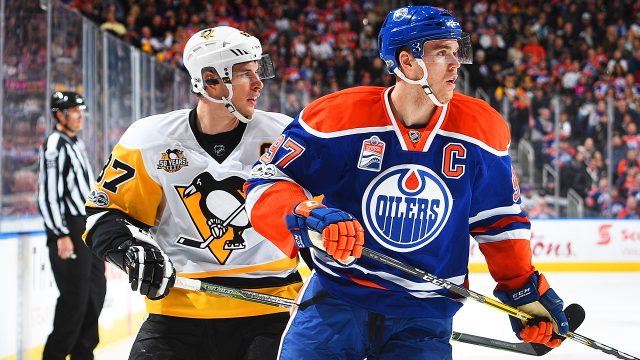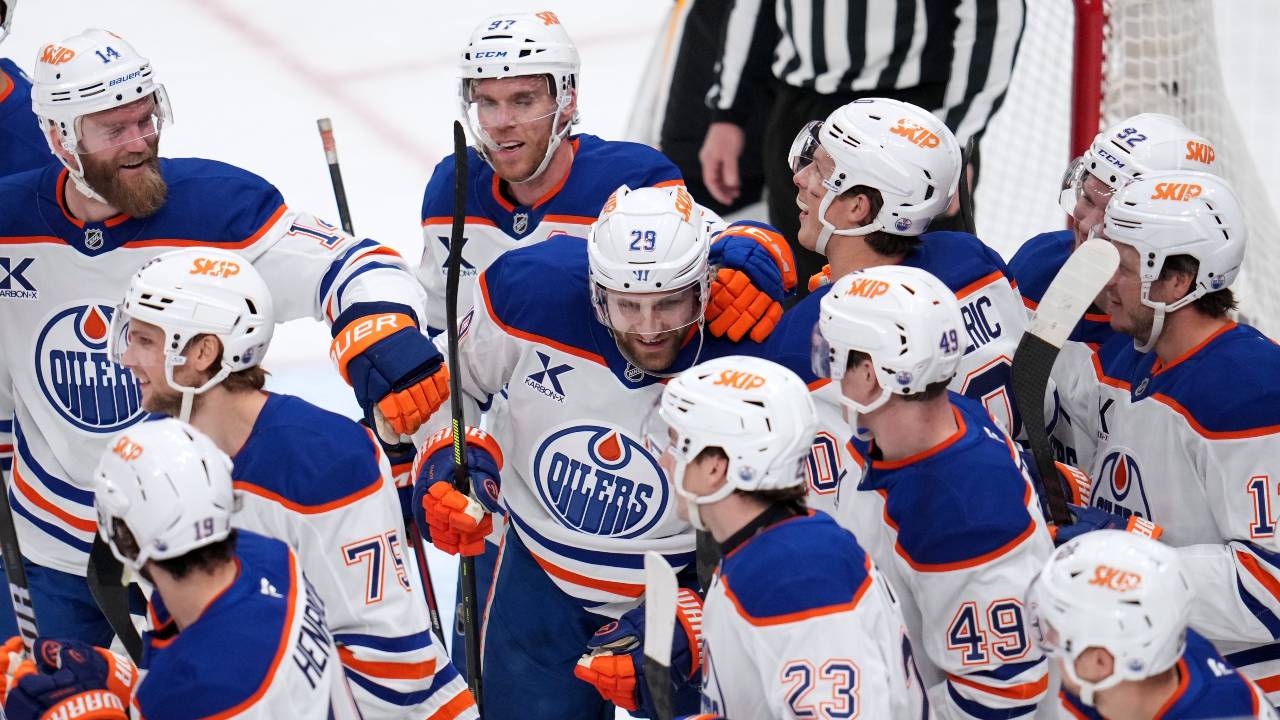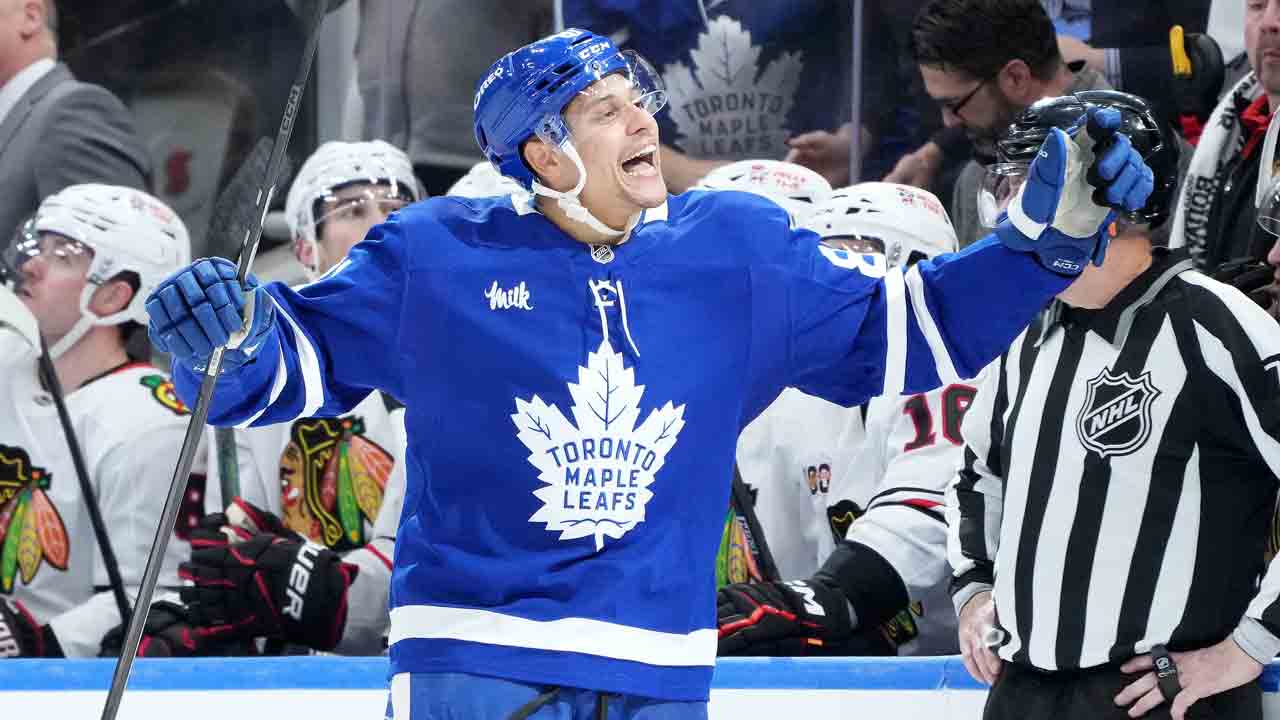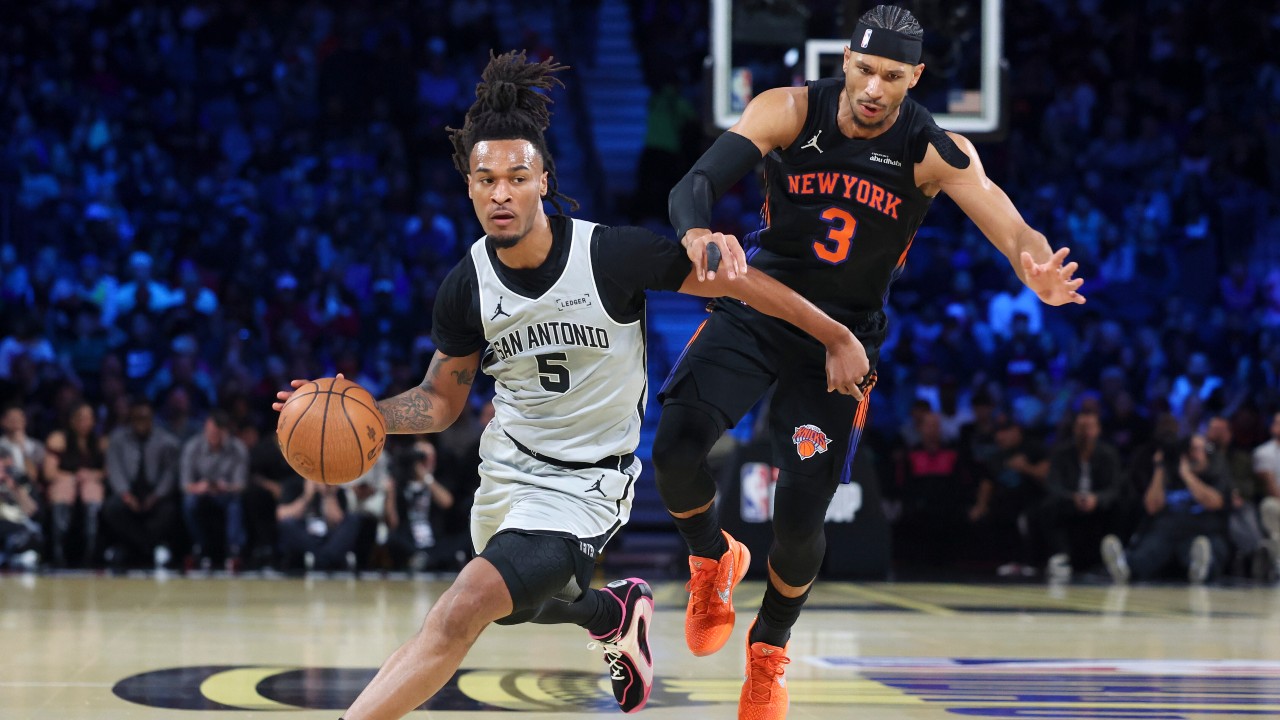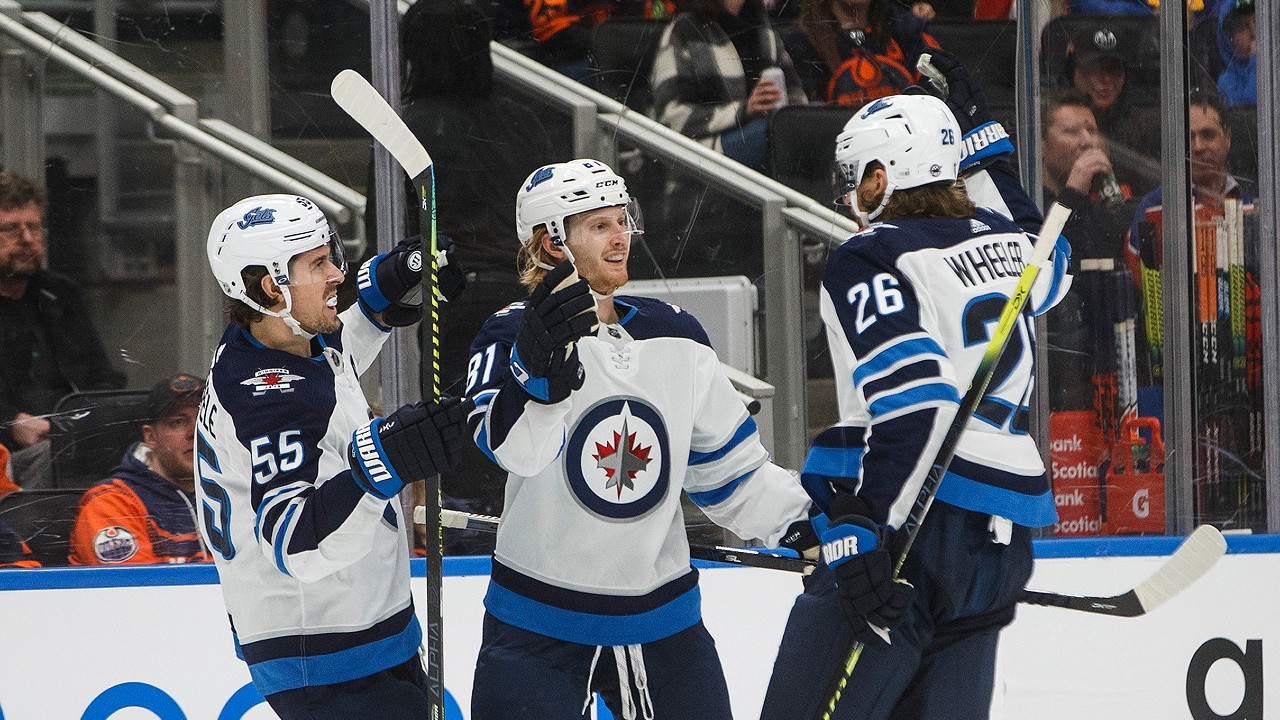
When you try to make bold predictions, all you’re really doing is setting yourself up for failure. This year’s playoffs are a special kind of wild card, too — nobody knows how anything will translate after such a long pause.
But I’ll give it a try anyway.
The following five bold predictions aren’t meant to be presented as surefire, or even likely, results. They’re also not completely outlandish (at least to me). You won’t see a Montreal Canadiens Stanley Cup pick here. In this article, we’re trying to predict some long-odds result, but with a basis in reality.
Yell at me in the comments.
NEW YORK RANGERS ARE THIS YEAR’S CINDERELLA TEAM
New York is a popular upset pick over Carolina in the first-round, though the ‘Canes could easily blow up this whole prediction. You pretty much know what you’ll get from them and if they go out, it won’t be quietly. The Rangers did, however, sweep the season series 4-0 (take that with a grain of salt).
But let’s go a step further and say New York will be the surprise team of this post-season and win a few rounds. The Rangers are an intriguing mix of established star power and a whole bunch of high-upside uncertainty.
Take goalie Igor Shesterkin for example. A highly touted prospect, the plan was to keep him in the AHL this season but he was too darned good to keep down. He earned 12 NHL appearances in the late stages of the season and immediately snatched the starter’s job by posting a .932 save percentage and 10-2-0 record. But what can he sustain, really?
If he’s going to be anything close to that, it’ll combine with an offence that was top-five on the season and top-three from Jan. 1 until the pause. Artemi Panarin is the headliner, but Mika Zibanejad is a back-to-back 70-point player and Chris Kreider is always a handful. And what about the younger players? Adam Fox had a stellar rookie campaign — how will that translate to the playoffs? Kaapo Kakko’s transition to the NHL wasn’t as smooth, but will the pause help him find a higher level?
The Rangers will be fun either way. In the back half of the shortened regular season they were one of the highest-event teams — second in shots for at 5-on-5 and bottom-eight in shots against. If the goaltending stands up, they could be a tough out. And, hey, if Shesterkin starts slow, you could do worse than having Henrik Lundqvist as your Plan B.
WINNIPEG JETS WILL BE CANADA’S LAST TEAM STANDING
The biggest question in Winnipeg is whether or not Connor Hellebuyck can be in the playoffs what he was all season: an absolute wall behind one of the leakiest defences in the league. If his exhibition showing is any indication, he and the Jets will be just fine.
But the Jets are about more than their goalie. They can score and they can be hard to play against. After losing the likes of Jacob Trouba, Dustin Byfuglien and Tyler Myers from last year’s roster, the team size isn’t quite as big this season but they’re more of a hybrid. They can play big and physical, and they can play fast and loose.
And while that blue line is a real concern, Winnipeg may actually have the fewest questions of any Canadian team. Few teams have better goaltending. Few teams have as nice a spread of skill and traditional “playoff grit” in the lineup. They’re two years removed from reaching the Western Conference final. Most of this roster has been there and done that before — which you can’t say for Edmonton, Toronto, Calgary, Montreal or Vancouver.
Winnipeg’s first-round matchup against the Flames appears to be a good one, too. Neutralize Calgary’s top line and this could be a quick series. It was last year when Colorado limited Elias Lindholm, Johnny Gaudreau and Sean Monahan to five points. Hellebuyck himself could eliminate the trio.
On top of that, Nikolaj Ehlers is due for a playoff breakout. Still without a goal in 21 post-season games, Ehlers has scored 100 times over the past four regular seasons and converted once in the exhibition. If he can be unlocked and add to what Winnipeg already throws at you with Mark Scheifele, Blake Wheeler, Kyle Connor and Patrik Laine, they could have the best offence in Canada.
SERGEI BOBROVSKY LEADS ALL GOALIES IN SAVE PERCENTAGE IN QUALIFYING ROUND
Florida’s $10-million man garnered a lot of negative attention for posting the worst season of his career as a starter after signing a monster free-agent contract last summer. But there’s a path for him to redeem himself.
Consider that last season Bobrovsky finished with a .913 save percentage, but that through January he was sitting at .901. It took a great push late in the year and through two playoff rounds for him to come out of it somewhat of a hero, leading Columbus to a sweep of Tampa Bay. The two-time Vezina winner could find that form again at the drop of a hat.
But Florida’s defence leaks high quality chances against and will make it harder on the goalie.
So does Winnipeg’s and Hellebuyck keeps them in the running.
If Florida was up against a team like Toronto or Pittsburgh this prediction would be hard to fathom, but the Islanders offence doesn’t have that kind of high upside. While the Isles ranked middle of the league in 5-on-5 scoring chances this season, they converted the fewest of any returning Eastern Conference team. They don’t have a game-breaking goal-scorer and rely on structure to win. When the Islanders play a bit boring, they’re on the right track.
If Bobrovsky plays as we’ve come to expect, the Islanders are going to be in an even worse spot on offence. Florida’s defence perhaps doesn’t need to be an improved unit in this series, though that is a concern for them. This is a series Bobrovsky can absolutely steal. He’s one year removed from a stellar post-season, three from a Vezina-winning year. The break could have done some good, to clear his mind and provide rest from his heavy workload.
Florida needs the real Bobrovsky back.
KEVIN FIALA WILL LEAD THE QUALIFYING ROUND IN SCORING
Over the 2019-20 regular season, only Chicago, the Rangers and Ottawa allowed more shots against per game than Vancouver and they were getting progressively worse in that department all year. From January to the pause, only New Jersey averaged more shots against than Vancouver, and in just the last six weeks of action no one allowed more than the Canucks’ 35.2.
Minnesota, meanwhile, was finding a groove and piling up wins. Fiala was front and centre to that charge, with 14 goals and 26 points in his final 19 games.
Now, it’s impossible to tell what, if anything, will carry over from a regular season that concluded nearly five months ago, but Fiala was far and away Minnesota’s best player in their exhibition game. It certainly looks like he’s achieved some level of a sustainable breakout, though we need more evidence to be sure. A strong playoff series or two will do that.
The Wild-Canucks series is, on paper, one of the closest of the qualifying round and a popular pick to run the full five games. It could be a high-scoring one as well — these are the eighth- and ninth-best offences from Jan. 1 on.
The Canucks do have Jacob Markstrom back healthy and that could be a game-changing addition for them, but if the defence in front of him is as loose as when we last saw it, his return may not matter enough.
It’s not bold enough to say Fiala will lead the Wild in scoring — he’ll have to be a productive player for them to win. But if this thing goes the distance, he could come out of it with a pile of points.
MORE THAN HALF OF ROUND 1 SERIES WILL BE UPSETS
Note: Remember, first up is the qualifying round, which will be followed by ‘Round 1.’
Upsets regularly happen in Round 1 of the playoffs, so it would be just as bold to predict a clean sweep in favour of all the teams that are getting a bye through qualifying. But having at least five lower-seeded teams knocking out a favourite in the opening round is much less common. It did happen in 2019, but that was the first time since 2013 there had been so many upsets. In the past 30 years, it’s only happened one other time (1993).
The rationale for this one is simple: the eight teams that survive their qualifying series will have already played high-stakes playoff hockey and lifted their game to the required levels of intensity. And while the eight round-robin teams will be playing for seeding, there’s just not as much on the line there. Sure, you’d rather put yourself in position to play a Florida or Columbus than a Pittsburgh or Carolina, but the threat of elimination just won’t be there. We’d expect those games to have a higher sense of urgency than the exhibition matches we’ve seen, but it’s just not exactly a playoff atmosphere.
The qualifying winners could just be better from the get-go and running on the inside of the track. Home-ice advantage is just not really a factor this year. The bigger advantage could be a short best-of-five introduction back to game action. Injuries, of course, could blow this right up.
But this is a two-fold prediction. While the qualifying-round winners could have an advantage to start, over the long haul playing fewer games may favour the higher seeds. They’re still having to play four official rounds to win it all, while the rest have to play five. The regular playoffs are enough of a grind. An extra round — even if short — could wind up being a curse.
So while Part 1 of this prediction is that a ton of upsets will happen in the first round, Part 2 is that a bye team will win the Stanley Cup. It’s certainly less spicy to predict that one of the best regular-season teams will end up as champion, but since I’ve eliminated five of them early, it’s hot enough.


